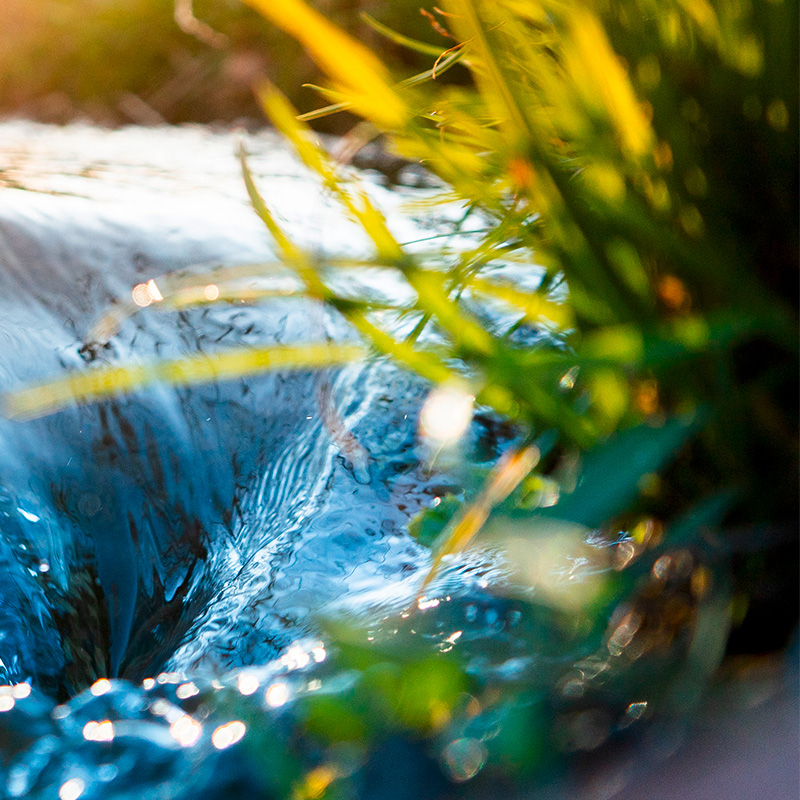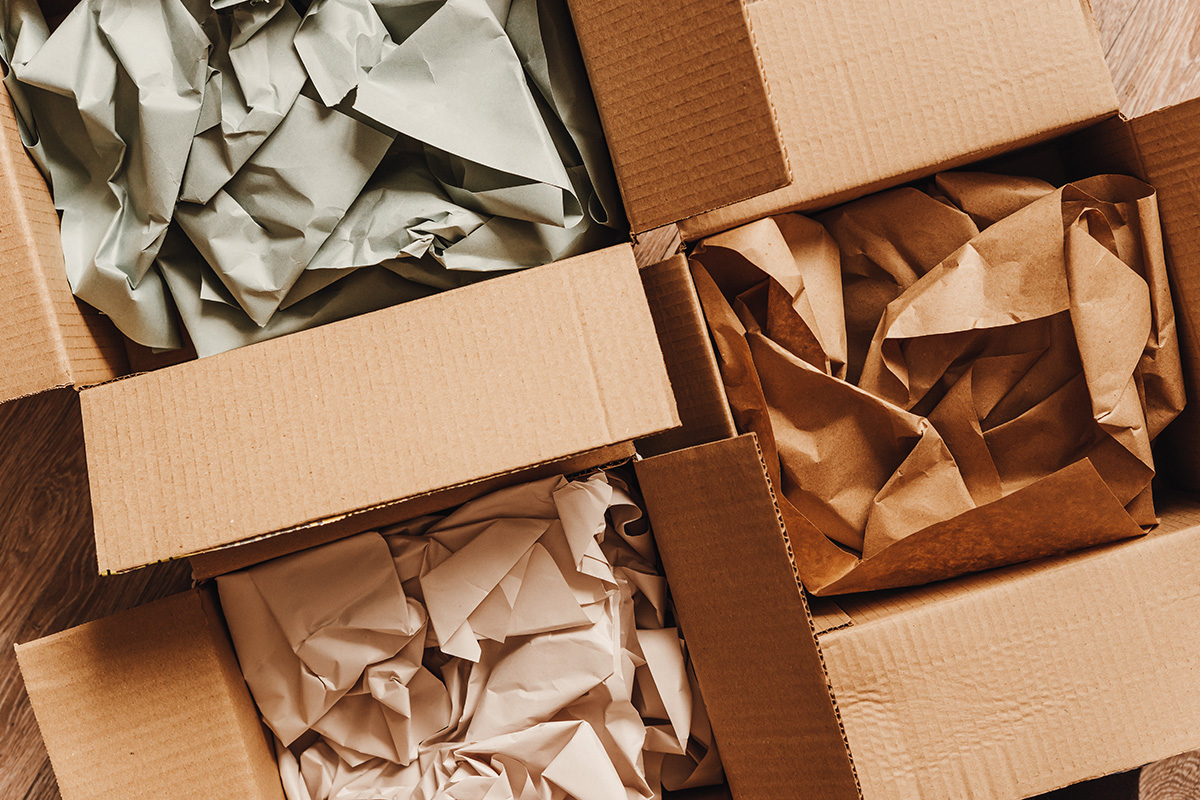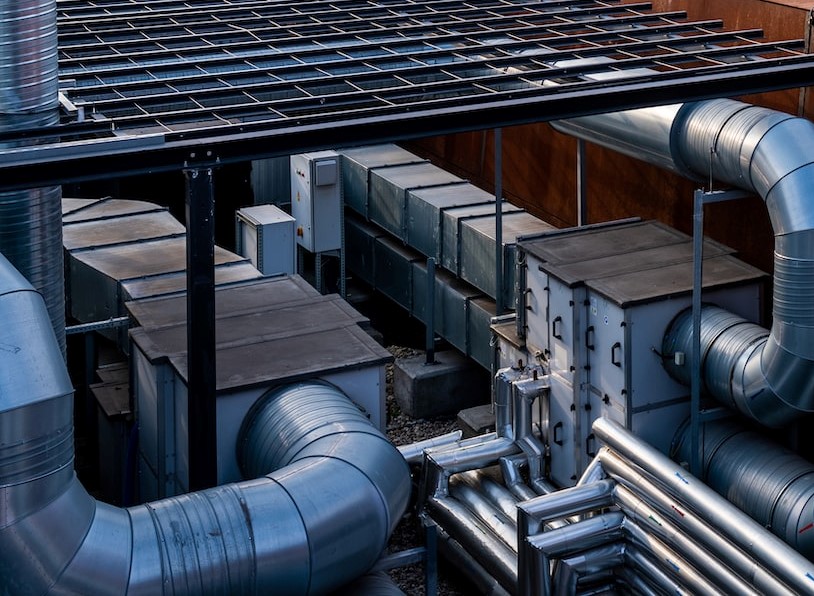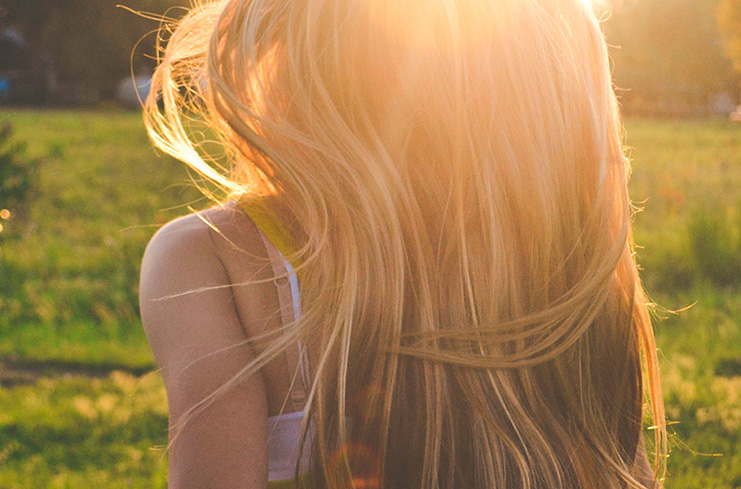A.S. Création’s sustainability campaign
Time is pressing. We are leading the way.
Sustainability is one of the most pressing topics of our time. Because only if we act sustainably can we protect and preserve resources for the next generation.
So we at A.S. Création are asking ourselves the following questions: What are we doing today that might be harmful for tomorrow? What contribution can we make to society? What has to happen here and now?
Spotlight on sustainability
EcoVadis Rating
In order to obtain a continuous and independent assessment of our sustainability performance, we have had an annual rating carried out by the renowned provider EcoVadis since 2021. EcoVadis evaluates the sustainability performance of more than 100,000 companies worldwide in the areas of environment, human rights, ethics and procurement. This analysis is tailored to the respective industry.
After being awarded bronze status for our commitment in 2021 and 2022, we are proud to have achieved silver status in 2023. Our performance puts us in the top 25% of all companies assessed in the paper processing industry. Strong, but not yet strong enough. Through the annual assessment, we identify gaps in our strategy and receive suggestions for targeted improvement measures. Our aim is to close these gaps step by step in order to improve even further in the future.
Ambitious goals
Under the motto "Avoid, Reduce, Compensate", we are constantly working to reduce our climate footprint. Through an extensive analysis, we have worked out our CO2 reduction potential for 2030.
Our ambitious target: 30.6% less CO2 emissions in 2030 compared to 2020. this reduction puts A.S. Création within the corridor calculated by the Science Based Targets initiative (SBTi) to reduce greenhouse gas emissions in order to limit global warming to 1.5°C.
Further details on our reduction targets can be found below in section 1. climate protection.

Sustainability report
Honest and effective sustainability management requires transparency. Hence our in-depth sustainability report. Here you will find details of our progress, our key performance indicators and our goals.
d'eco - The sustainability label for wallpapers
All the wallpapers we produce in Germany meet a very high quality standard that our customers can rely on. In recent years, the importance of sustainability criteria in the assessment of products has increased significantly. This also applies to wallpapers.
For this purpose, we have developed the "d'eco" label. Wallpapers that are allowed to carry this logo fulfil additional sustainability criteria. In this way, we offer customers with a high awareness of sustainability a simple orientation when buying their next wallpaper.

Sustainability is a priority for us.
Our sustainability officer Marcel Weitz reports directly to the Chairman of the Board of Directors. Since January 2021 he has been tasked with organising, coordinating and promoting our sustainability efforts.
Marcel Weitz
It’s all about thinking pragmatically and identifying the areas where a real difference can be made. These are the details that count, the many 1% improvements that together make a big improvement. Sustainability is not a measure; it is a continuous, never-ending journey where the only goal is to do better.



Areas of action
We’re ready
Of course we can’t improve everything all at once. So we’re focusing first on the topics with the best improvement potential and on which we have a direct influence. We are helped in this by objective evaluation criteria, primarily our carbon footprint and the EcoVadis rating.
Top-class quality, produced sustainably
At the heart of all our efforts is the question: How can we guarantee the high quality of our wallpapers at a competitive price – and meet the multiple requirements of climate protection, environmental protection and other issues at the same time?
This is a delicate balance and we have designated eight areas that we are working on in the gradual process of making our company and our wallpapers sustainable.
1. Climate protection
In its Sustainable Development Goals, the UN highlights the special responsibility of private-sector companies in the fight against climate change. We are aware of this responsibility and will significantly intensify our efforts to reduce CO2 emissions. As a first step, we have established a baseline carbon footprint for the 2020 financial year. We will measure our progress against this in the coming years. But we wanted to know exactly.
That is why we did not limit ourselves to direct energy consumption at our locations and the purchase of energy (Scope 1 and Scope 2), as many other companies do. We also calculated all indirect emissions caused by the purchase of raw materials and logistics (so-called Scope 3).
| Emissions in tonnes of CO2 | 2020 | 2021 | 2022 |
| Scope 1 (heat, refrigeration, vehicle fleet) | 8.938,60 | 8.640,37 | 6.973,55 |
| Scope 2 (electricity) | 3.246,06 | 0,00 | 00,00 |
| Scope 3 (purchased goods, logistics, waste disposal, etc.) | 101.568,08 | 83.026,27 | 59.312,60 |
| Total emissions | 113.752,74 | 91.666,64 | 66.286,15 |
| of which location -based emissions (incl. upstream chain electricity & heat) | (16.614,70) | (12.618,83) | (10.049,29) |
30.6 % CO2 savings by 2030
The determination of emissions alone is not sufficient for a company to contribute to compliance with the Paris Climate Agreement and thus to limit global warming to a maximum of 1.5 °C. For this purpose, it is necessary to derive a reduction strategy from the CO2 balance, to define reduction measures and to implement them consistently.
Therefore, possible CO2 reduction potentials for A.S. Création were identified. This investigation was based on internal analyses, supplier surveys and the evaluation of scientific sources. A 10-year period, from the starting year 2020 to the target year (inclusive) 2030, was defined as the target horizon.
Since the company's emissions are strongly dependent on the production volume, the relative key figure kgCO2/Euroroll was formed, which puts the absolute emissions in relation to the production volume. This ensures comparability of the results over time and presents an honest picture of the actual reduction.
A.S. Création has thus set itself the following CO2 reduction target:
CO2 emissions (Scopes 1 - 3) of A.S. Création Tapeten AG, are to be reduced by 30.6% from 5.65 kg CO2 per Euro roll in 2020 to 3.92 kg CO2 per Euro roll in 2030.
As a continuous linear reduction cannot be assumed, A.S. Création has set a reduction corridor of +-20% within which the annual results may range.
With this reduction of emissions, A.S. Création Tapeten AG is within the corridor calculated by the Science Based Targets Initiative (SBTi) for the reduction of greenhouse gas emissions in order to limit global warming to 1.5 °C.

Electricity consumption 100% CO2-neutral
As recently as 2020, 14.6% of CO2 emissions were attributable to site-related emissions, mainly from self-generated heat from natural gas and purchased electricity. We have now solved the electricity problem: since the beginning of 2021, we have been purchasing all electrical energy from renewable sources, primarily hydropower. This decision saves us, A.S. Création, around 3,000 t of CO2 every year.
At present, we cannot yet do without natural gas. Wallpapers are printed with water-based inks that have to be dried with heat. In order to meet the strict legal requirements for keeping the air clean, the exhaust air must be cleaned by thermal afterburning. And that can currently only be done using natural gas.
2. Product security and safety
Products like wallpapers that are used in living rooms, bedrooms and nurseries, must be non-hazardous to health. For us the safety of all raw materials and chemicals used is therefore of paramount importance. In other words: We meet the strict legal requirements for interior products – and in many areas even surpass them.
For example, we have converted all our plasticisers to a phthalate-free variant. We have done this for all wallpapers produced from 1 January 2023. By doing this we are ensuring that our wallpapers are even safer.
Non-hazardous to health and ethically safe
But it’s not only about safe materials. We want our production to be ethically safe as well. That’s why we have multiple certifications for our raw materials. All papers and nonwovens on which we print our wallpapers are certified by the Forest Stewardship Council (FSC). This certification is our guarantee that the wood comes from responsibly managed forests. This means firstly that clearcutting is prevented, and secondly that the forest ecosystem is protected from, among other things, the extinction of animal and plant species.

3. Raw materials and packaging
More than 60% of all emissions generated by us are due to raw materials that we need for our wallpapers. We therefore continually and systematically check the materials used to see whether there are more sustainable alternatives, e.g. made from recycled materials or biobased alternatives. But the product consists of more than just the wallpaper itself.

More environmentally friendly packaging
Our wallpapering needs good packaging to prevent it from being damaged during transit. As it ends up in the rubbish bin, its environmental impact should be as low as possible. For this reason our shrink wraps are not only 100% recyclable, but also consist of 40% recycled plastic. A higher proportion at the same quality level is currently still hard to achieve. But we’re working with our suppliers to improve it further.
Another issue is the box in which our rolls are transported. A large part of it consists of recycled paper. However, it is strengthened a little by the cardboard box manufacturers with fresh fibres, in order to guarantee the stability of the box. The material can therefore be recycled up to eight times.
We also constantly test new, highly sustainable packaging materials. If these meet our strict criteria, then can be introduced in production series.
4. Research and development
Our colleagues in the laboratory work continuously to optimise our formulations and make them more sustainable. One focus of our research is currently on the search for an alternative material for polyvinyl chloride (PVC).
For several decades PVC has been the plastic of choice for countless products – in medical technology, in the construction sector and also in our wallpapers, in particular the textured wallpapers. It is safe to use, durable, versatile and, because it is widely used in industry, there is a reliable supply of it. Unfortunately, this plastic also has a major impact on our carbon footprint.
Innovate plastics
But plastics technology is moving forward. New, innovative opportunities are opening up for the manufacture of PVC-free wallpapers. We are still in the development phase. Research and tests, even if they are high-priority, need time and success cannot be forced. However, we are optimistic that we will soon be able to offer our customers high-quality textured wallpapers that are PVC-free – and that therefore significantly reduce our CO2footprint.

5. Energy management
As part of our energy management system (ISO 50001:2018) we are constantly looking for ways of exploiting energy savings potentials and increasing energy efficiency. We are focussing particularly on electricity consumption savings potentials. Efficient engines, compressed air systems, but also vents and lighting are being considered here. However, the majority of our energy requirement does not come from electricity, but from natural gas.
In order to meet the strict legal requirements with regard to clean air, the exhaust air used in our production process must be purified by thermal afterburning at over 700°C. And at the moment this can only be done using natural gas.

Efficient heat use
However, we use the heat that this generates very efficiently: We use heat exchangers to supply our production facilities with the thermal energy needed to dry our inks. By means of additional conversion systems we use almost all the thermal energy generated, for example for hot water production. In this way we save additional energy and ensure that no unnecessary waste heat enters the environment.
New technologies are constantly being developed, especially in the area of energy technology. We are observing this development so that one day in the future we may be able to do without natural gas.
6. Circular economy
Over 60% of all wallpaper waste recycled
In the day-to-day running of a manufacturing company, the generation of waste is inevitable. One source of waste in wallpaper production is, for example, the so-called start-up rolls. This is the waste generated until the printing inks are exactly matched and the optimal colour is achieved.
Border offcuts also account for a significant proportion of waste. As the printing systems cannot print right to the edge of the paper or nonwoven fabric, unprinted areas remain at the borders. These are cut off after printing so that the finished wallpaper strips can be hung next to each other.
We are currently working on recycling solutions so that the valuable raw materials that are bound up in this waste are not lost. In 2021 over 60% of all wallpaper waste was recycled and used, for example, as insulating materials. Thus, the carbon contained in it remains bound up for a very long time.
We have an overall waste separation rate of 98.2%. Almost all residues can therefore be properly processed. We are also conducting intensive research to find other ways of recycling our operational waste and thus contributing to the circular economy.
7. Occupational safety and promotion of young talent
For our sustained success it is essential that qualified employees enjoy working for the company. We therefore ensure, for example, a safe working environment and training opportunities for all positions. Our occupational health management also ensures the sustainable promotion of employee health. The result is employees who combine specialist expertise, creativity and vision and are committed to working for the success of the company – we’re proud of that. To ensure that this remains the case, we also invest heavily in our young workers.
High identification level
Our great commitment to in-house training is an essential factor in our sustainable development. Every year we provide training in fourteen different career fields in the sales and commercial sector. Our trainees are fully integrated into the business and can contribute their own ideas and suggestions, especially in the area of sustainability. This means that they identify strongly with the company and the products. And this keeps us and the wallpaper product at the cutting edge as the voice of the next generation.

Personal responsibility as the key to success
The success of this commitment can be seen, for example, in the “trainee blog” – a website by trainees for trainees. A trainee-only initiative, our young talents offer both interested parties from outside the company and trainees themselves a comprehensive insight into the different apprenticeships, work placements and day-to-day work at A.S. Création. The trainee blog is worth a look. Happy reading.
8. Compliance and business ethics
As an international, listed company, we are subject to a large number of regulations. In our opinion, compliance with laws and guidelines is an essential aspect of our sustainability strategy. This concerns several areas – from dealing with business partners to IT security.

Treating colleagues with consideration
The decisions and actions of our employees not only have an impact within the company. They also have an effect on people and business along our supply chain. We therefore aim to act with care and consideration in our business dealings, in order to protect people and nature. This aim relates to business ethics, but also to IT security and data protection.
Sustainable IT security
In recent years the areas of IT security and data protection have become increasingly important. Now they are core topics in internal risk management. In order to continuously raise awareness and train employees in these areas, in 2021 we introduced and e-learning platform. It trains them in security topics such as how to work with websites, emails and data carriers and makes them aware of cyber risks and data protection issues. We also regularly test our IT structure for weaknesses in order to maintain a high level of information security.
Our Guidelines
Environmental Guideline
In the context of A.S. Création's sustainability strategy "GREEN STEPS", effective environmental protection is a key target dimension. This environmental guideline defines our values and basic principles according to which we want to practice environmental protection as a company but also as employees. In this way, we assume responsibility in dealing with nature and thus lay the foundation for long-term and sustainable business.

Do you have any questions?
Send us an email:
nachhaltigkeit(at)as-creation.de
Your contact person: Marcel Weitz
We’d be pleased to hear from you.







